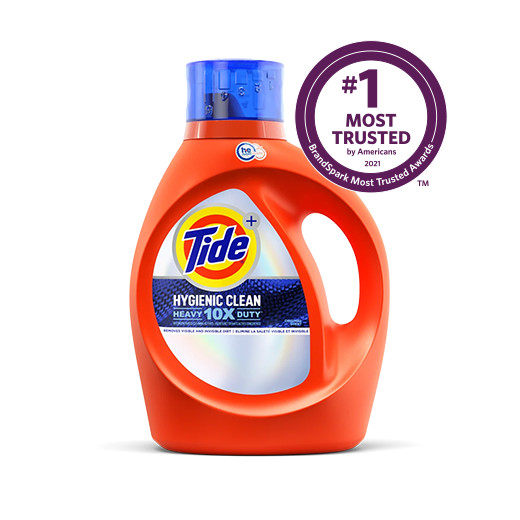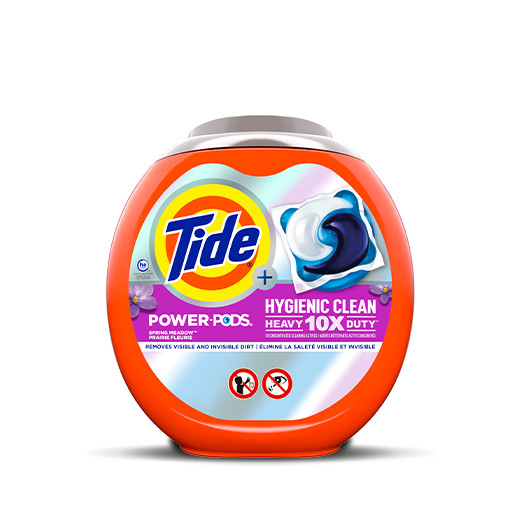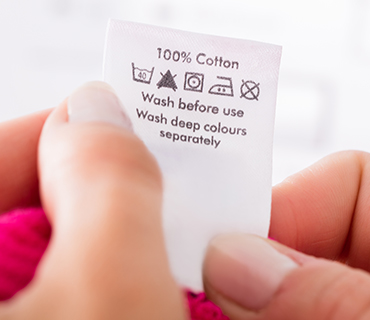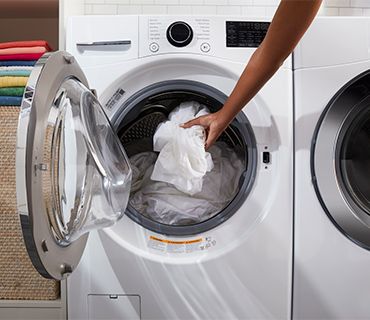For a more detailed explanation, read our step-by-step guide on how to clean stuffed animals.
The Effortless Way to Keep Your Everyday Items Clean
Research* shows that keeping your environment clean and organized will make you less stressed-out and happier. Guess which is one of the surest ways to clean something? That’s right, washing it! You see, we are surrounded by things that need to be washed regularly—some of them you might never have even considered machine washing before! From your kids’ stuffed animals and your beloved area rugs to the throws decorating the couch. Even if at first glance these objects seem clean, they can still have invisible dirt on them.
Luckily it can be easily removed if you’re using a high-quality, deep cleaning laundry detergent like Tide Hygienic Clean Heavy Duty 10X Power PODS or Tide Hygienic Clean Heavy Duty 10X Original Liquid Laundry Detergent. Read on for tips on how to incorporate your everyday household items into your laundry routine!
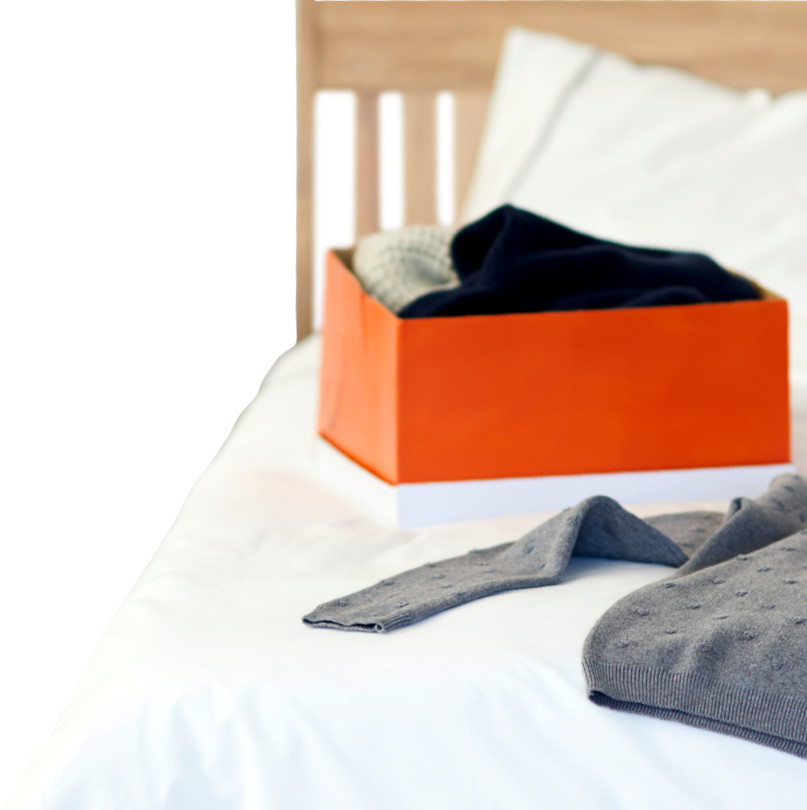
Tips for Doing the Laundry Regularly Without Breaking a Sweat
Getting into the habit of doing the laundry regularly will help you get rid of all the visible and invisible dirt particles that your household items have attracted over time. Keeping everything clean on a regular basis actually requires less effort than washing everything at once in one huge “spring clean.” If you’re working from home now, you can even do it in your lunch break!

Use the Quick Wash Cycle
If you’re dealing with fabric items, the fastest and easiest way to achieve that hygienic clean is using your machine’s quick wash cycle. Running your textile-based household items through a quick wash cycle will not only save you time, but water and energy as well!
Before loading your washing machine, don’t forget to check the items’ fabric care label to make sure that it’s machine washable. If you want to know more about the process, read our handy quick wash cycle guide, or watch the short video below.
Choose the Right Detergent
In order to do your laundry more efficiently and end up with squeaky clean household items, you will need a high-quality detergent with powerful cleaning performance at the microscopic level and tough stain removal capabilities. You’ll also want one that works in both hot and cold water, and that’s suitable for both regular and HE washing machines. To remove both visible and invisible dirt from your garments in just one wash, we recommend using Tide Hygienic Clean Heavy Duty 10X Power PODS or Tide Hygienic Clean Heavy Duty 10X Original Liquid Laundry Detergent.
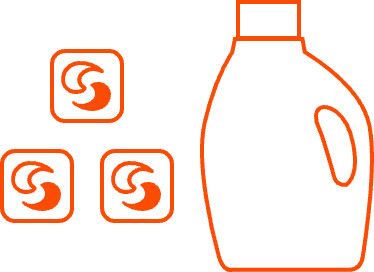
Things You Should Wash Regularly, Besides Clothes
Now that you know which cycle to use and which detergent is best for giving your fabrics a deep clean, it’s time to go through the ins and outs of washing 12 everyday household items, which we recommend washing regularly.

How to Wash Dog Toys
When washing pet toys, follow the manufacturer’s instructions, which you’ll probably find printed on the toy, on a tag, or on the packaging it came in. If you can’t find any care or cleaning instructions, simply toss them in the washing machine, add detergent, and wash them on a cold or warm water setting.
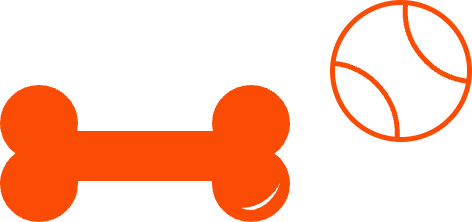
How to Wash Stuffed Animals
When it comes to determining whether it’s a good idea to wash your stuffed animals in a washing machine, the first thing you’ve got to check is if they contain any electronics, batteries or foam filler balls. If they do, you can use a clean toothbrush and some liquid detergent to gently brush away the dirt particles dotting their surface.
If they don’t contain anything that doesn’t belong in the washing machine, the stuffed animals are good to go. You should wash stuffed animals every two weeks in cold water with your choice of high-quality Tide laundry detergent.

How to Wash Rugs
Washing rugs in a washing machine? You might be surprised to find out that many rugs are in fact machine washable. Rugs that are made of cotton or synthetic fibers (even those with a rubber, no-slip backing), as well as small braided or woven rugs can safely be placed in the washing machine on a cold water wash cycle every three to six months. If the rug is small enough, place it in a mesh bag or a zippered pillowcase before washing.

How to Wash Dish Towels
You throw away your paper towels after every use, right? It’s only logical then that you should wash your dish towels every day – if you want your dish towels to stay odor free, that is. Washing dish towels is simple: just place them inside your machine, add detergent, set the water temperature to hot, and run them through a quick wash cycle. Watch this short video for more on this:
To keep your dish towels clean and fresh smelling, make sure that you keep your kitchen clean: This way, your towels will have no bad smells to pick up and absorb from their environment.
How to Wash Curtains
Curtains and drapes gather dust like few other things in your home, resulting in an unpleasant, dull look and a musty smell. However, with the help of a step stool and Tide’s high-quality laundry detergents, you can keep your curtains in a spick-and-span condition in just a few simple steps.
Remove all the hooks and curtain weights.
Soak the curtain in cold water before washing.
Place the curtain inside your washing machine.
Add detergent.
Wash your curtains in cold water and use the delicate cycle if the curtain is made of a delicate fabric.
Repeat these steps every five or six months.
How to Wash Pillowcases
You spend eight hours every day with your head on your pillowcase, and so the fabric absorbs your skin’s oil, your sweat, and any saliva you drool out while you sleep. For a more hygienic beauty sleep, you should wash your pillowcases every three days, separately from your pillows, using one of Tide’s high-quality detergents and your washing machine’s hot cycle setting. This helps eliminate even the tiniest bits of oil, sweat and saliva residue. When it comes to the question of how to wash silk pillowcases, our advice is to place them in a mesh bag and wash them in cold water using a gentle cycle.

How to Wash Pillows
While most pillows are machine washable, it’s recommended to check the care label on the pillow for washing instructions. Washing pillows should be done every two to three months on a hot water setting. Due to their unique composition, the filling of your pillows can trap some detergent even after the wash, so you’ll want to use a second rinse cycle to remove every trace of soap from inside the pillow.
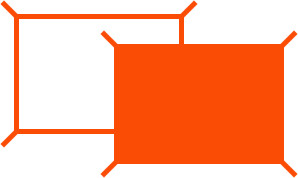
How to Wash Bed Sheets
On average, people sweat up to half a liter of liquid a night, and most of that ends up being soaked up by the bed sheets. Since your body spends a third of each day in close contact with your bed sheets, it’s important to give them a thorough clean regularly.
How often should you wash your sheets? Once a week is about right. After placing your bed sheets into the washing machine and adding the detergent, make sure you use the hottest water temperature setting listed on the care label.
To learn more, read our comprehensive guide on how to wash bed sheets, or watch our video guide below.
How to Wash Comforters
You should wash your comforters once a month. Make sure to spot-treat any stains with a detergent before washing comforters in the washing machine. Both comforters and down comforters should be washed on a gentle or delicate cycle with cold or warm water for the best color and fabric protection, or with hot water for ultimate dirt removal. For the best results, add an extra rinse if possible.
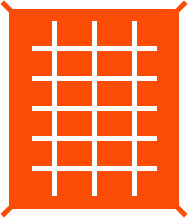
Check out our article on how to wash bedding and read our step-by-step guide on how to wash comforters.
How to Wash Shoes
You wear your shoes everywhere you go and so you bring a lot of that “everywhere” home as well. Although your favorite pair of leather or suede shoes should never go in the washer, other types of shoes, like tennis or running shoes can and should be washed in machine once or twice a month.
Remove the laces from the shoes to keep them from getting tangled in the drum and put them in a separate wash bag or zipped pillowcase to go in the washer. Your insoles should also be removed as it’s better to wash them by hand. Before your throw your shoes in the washer, place a few old towels inside the drum – this will keep the load balanced and help prevent your shoes from banging around while the cycle is running. You may also want to put your sneakers in a mesh bag for extra protection. Use a cold water, low spin speed cycle for a gentle yet thorough clean.
Air drying your shoes will take about a day, but you can speed up the process by stuffing them with balls of newspaper sheets.

How to Wash Bathmats
Bathmats or bathroom rugs are like floor towels, used to help prevent us from slipping with wet feet after getting out of a warm bath or a cold morning shower. Designed to absorb moisture, a bathmat is highly attractive to hair, lint, and other types of grime.
So, how to clean bathmats, you ask? It’s simple. First, give it a few shakes outside to get rid of larger strands of hair and excess lint. Next, place it inside your washing machine, then add the detergent. Finally, run it through a gentle cycle using cold water. If the bathmat has a non-skid rubber backing, clean it every four weeks, otherwise it should be washed every one to two weeks. Need some additional help? Then watch our short video on how to wash bathroom rugs:
How to Wash Throw Blankets
Do you remember the last time you washed one of these? Well, the good news is that most throw blankets are machine washable – but to be safe, make sure you check the tag first. Generally speaking, you should clean your throws once every month, but if you’re the type of person who uses a throw blanket every day, you might want to wash it every other week. In case of extra delicate materials, place them in a large net laundry bag to prevent them from stretching in your washer. To wash your throw blankets, use a cold water setting and a short, delicate cycle. Watch our short video below and master the art of throw blanket washing:
More Laundry Hygiene Tips From Tide: Want to know more about cleaning and disinfecting your laundry? You’ve come to the right place! Learn how to avoid spreading germs and the infections they can cause in your home by reading Tide’s handy laundry hygiene tips.
* Study: No place like home: home tours correlate with daily patterns of mood and cortisol
Related products
Tide Hygienic Clean Heavy Duty 10X Liquid Detergent Original Scent
Tide Hygienic Clean Heavy Duty 10X Power PODS® Original Scent
Tide Hygienic Clean Heavy Duty 10X Power PODS® Spring Meadow Scent




